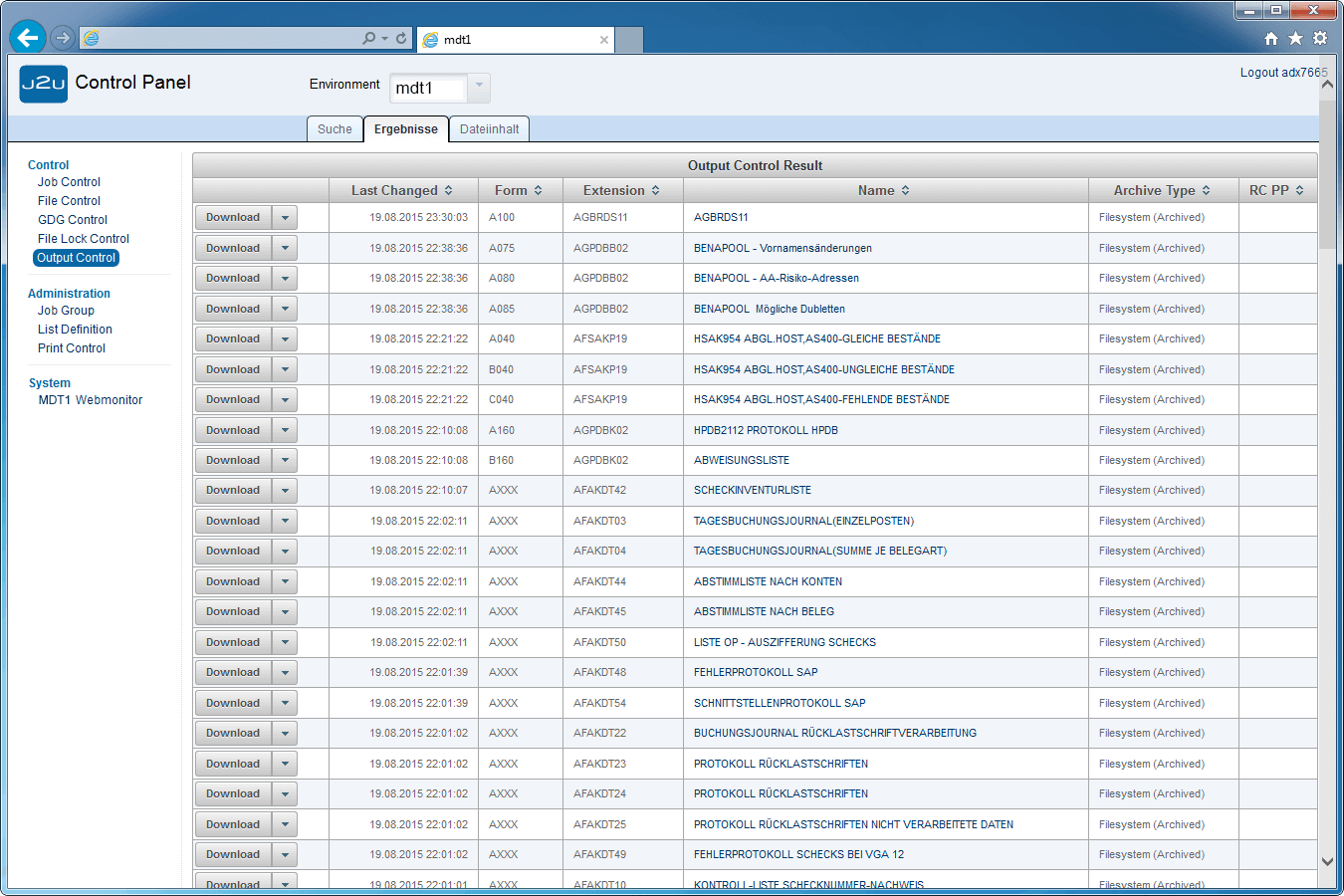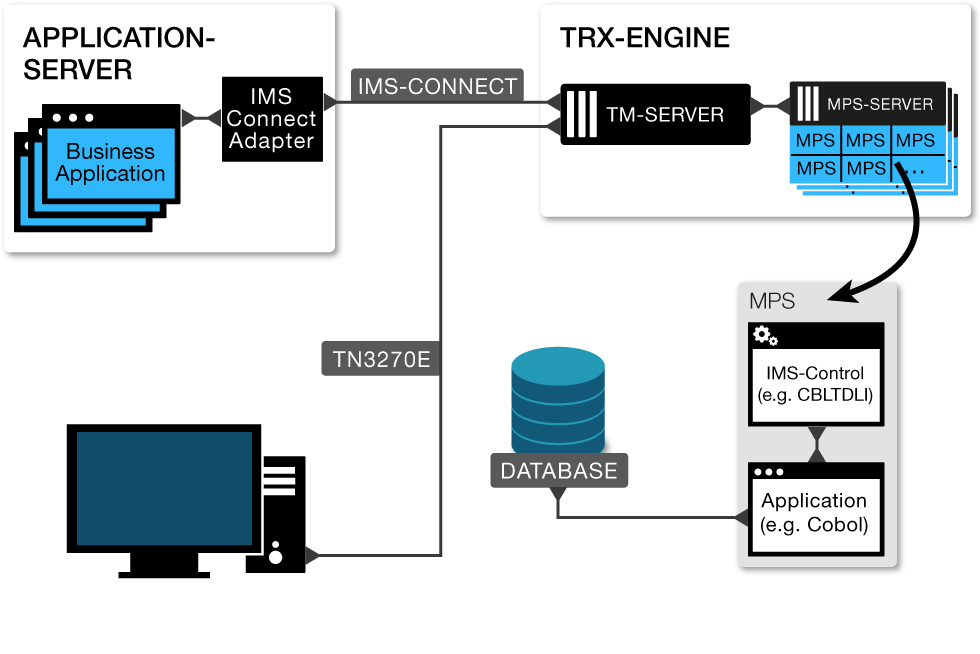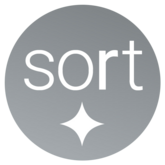
Mainframe Tools
Workload relocation or migration
We will find the best technical basis for you and make your mainframe system fit for the future. We optimize your operations, simplify maintenance and provide the right platform for your applications.
J2U - A COMPLETE BATCH RUNTIME SYSTEM FOR DECENTRALIZED SYSTEMS AND Z/LINUX
POSSIBLE APPLICATIONS
J2U provides JESx functionality via z/OS in a decentralized environment. In the J2U runtime environment, each available z/OS batch job can be carried out without modification on the new target platform Unix, Linux, z/Linux or Windows (optional).
To this end, J2U interprets the JCL and carries it out according to the same rules used via z/OS. The value contained within the JCL domain logic remains unchanged as a result.
To put it briefly: With J2U, your batch production runs just like before but on a different platform.
J2U supports the management of job progress alongside JCL and other scripting languages and, as a result, presents a business-wide integration platform for your batch applications. The following maintained standards apply:
- Security integration analogous to RACF, optional with connection from LDAP
- File organization and administration including a central catalogue and an HSM emulation with tiered storage
- Log and output management including archiving and connection to printing systems
- Supports various job schedulers
- Emulation of z/OS Utilities
Alongside log and output files produced by J2U, files can be imported to J2U. To this end, J2U provides an integration platform that unifies and simplifies central administration from both an organizational and a technical point of view.
- Definition and monitoring of storage periods
- Definition and execution of post-processing for job output (report creation)
- Integrated archiving function in file system
- Integrated interface for diverse archiving, i.e., back-up systems
- Integrated authorization check

The Job Control Panel provides access to jobs and the log archive. It contains functions to search through jobs and managing job-log files. The integrated monitoring functions enable the monitoring of jobs in progress.
Access is generally via the search page with comprehensive selection criteria for a detailed selection of jobs

The Job Control List of Results shows matches to the selected search criteria. The list also contains information to the job such as job number, start and end timestamp, the current status, return code, and job-group category.
Authorizations for displaying and adjusting entries is defined via the job group.
Depending on the return code, completed jobs can be found and manually marked in the input or error queue or by changing the Job Control Details so that jobs are displayed as “Reviewed”.

The individual log files for each job are listed under Job Control Details. Alongside the relevant job step with the corresponding return code step, the current archiving status is displayed.
Log files already archived in the backup system can be recopied via the Control Panel.
The log file can be displayed either by changing the file contents or by clicking on Download and saved locally.

The selected log file is shown under File Content. Log files have a structure familiar to JESx via z/OS and are continually updated in the case of an ongoing job.
In addition to the display, this window can also trigger a resubmit, i.e., the job can be started again.

The selected log file is shown under File Content. Log files have a structure familiar to JESx via z/OS and are continually updated in the case of an ongoing job.
In addition to the display, this window can also trigger a resubmit, i.e., the job can be started again.

The Output Archive List of Results shows matches to the selected search criteria. Authorizations can be set according to list definitions. Entries to list definitions made by unauthorized users are not maintained.
The current archiving status of each list is displayed. Lists already archived in the backup system can be recopied via the Control Panel.
The list can be displayed either by changing the file contents or by clicking on Download and saved locally.
WHAT BENEFITS DO I HAVE AS A CUSTOMER?
There are no changes to the domain guidelines governing your batch production such as to the logic and behavior of individual steps within jobs and within job networks. That minimizes the risk and duration of a migration.
Standards for batch processing that have stood the test of time via z/OS over decades are provided by J2U on the centralized platform, also enabling the management of any batch applications. Transfer of these standards to newly developed batch application, such as within a Java-based system, contribute to the consolidation and thereby to the reduction of maintenance expenditure.
With central job, log, and output files, JTU presents the decentralized world with an integration platform for the access and connection to further processing systems.
With J2U, your production planning and management gets a tool that simplifies the monitoring and, in particular, problem analysis in the case of error, thereby improving the efficiency of your employees.
The log and output management integrated into J2U includes functions that can fully meet customer demands.
Cost-intensive implementation of third-party products is no longer necessary.
Through the unchanged use of established batch procedures and associated jobs, there is no need to carry out all the usual tasks involved in migration projects or in testing each individual job. That means the lifecycle of the project is instantly reduced.
J2U produces the typical JESx job lists, which provide information about the status and progress of jobs. Your production planning steers the batch procedures according to the usual guidelines.
For employees with long-term z/OS experience, this makes the possibility of a change to the new platform easier by using familiar JCL instructions.
The web front end J2U Control Panel for controlling and managing J2U provides functions that mirror similar tools used in z/OS.
J2U emulates JESx to carry out the z/OS-JCL as well as functionality and control commands from IBM utilities such as ICEGENER/IEBGENER, IEBCOPY, IDCAMS, IKJEFT01, IEFBR14, FTP, FTPS, SMTP, SORT.
The functions of the central catalogue under z/OS, which contains all information about all the files in the whole system, are built using database tables.
The logic of file handling within batch jobs remains completely unchanged.
Unchanged use of productive batch procedures developed over many years without changing the JCL secures your investment and provides simultaneously for increased migration safety.
To put it briefly: With J2U, your batch production runs just as before but on a different platform.
TECHNICAL FEATURES
COMPONENTS
The key component of J2U is responsible for the execution of unmodified JCL on the decentralized platform.
Represents the interface of the J2U Engine and accepts queries to be carried out in the J2U Engine.
The optional J2U Hierarchical Storage Management (HSM) Emulation provides functions to transfer files to more cost effective storage media. The configuration occurs as with z/OS via storage classes. In combination with archiving systems the files can be archived for the lifecycle of the job, reloaded, or deleted.
Provides the interface for the actual print system. The Print Daemon processes the spool files produced during the lifecycle of the job and carries out other functions depending on configuration such as conversion. It also transfers the prepared file for printing to the printing system connected such as VPSX or CUPS.
Integrated archiving of the job log files in the file system or a connected archiving system such as TSM.
Optional archiving of job lists (job output files) in the file system or in a connected archiving system such as TSM.
USER INTERFACES
Creates access to launch execution commands directly to the J2U Engine from the console.
Enables the connection of diverse job schedulers such as TWS or Control-M to J2U.
The web application provides the central user interface for controlling and managing J2U.
Broadens the Eclipse IDE around functions for J2U. With the J2U plugin, jobs can be commenced directly from Eclipse IDE and the results displayed.

TRX - DECENTRALIZED TRANSACTION MONITOR ALSO FOR Z/LINUX
POSSIBLE APPLICATIONS
For IMS/TM applications on the mainframe, a compatible run-time environment on Linux and z/Linux is created, so that IMS/TM is practically no longer needed. As a result, CPU time and license costs on the mainframe can be saved.
Online applications using IMS/TM can be ported to Linux without major modifications, meaning several Cobol run-time environments can be supported. This means that application programs on the target system generally only need to be recompiled.
The TRX Engine is a lightweight, highly robust, and scalable transaction monitor for Linux and z/Linux. It provides a run-time environment via LINUX whose API is compatible with IMS/TM such as CBLTDLI.Extremely short response times and very good load distribution are special characteristics of the TRX Engine.

Lightweight and flexible architecture is the basis of an extremely robust and highly scalable system. As a result, high performance and stability is achieved.
Classic dialogue applications for emulation are just as possible as the simple integration of a JavaEE environment by using an IMS connect adapter.
WHAT BENEFITS DO I HAVE AS A CUSTOMER?
Valuable business logic lies in the existing programs. Therefore, new development is often associated with significant expenditure and risk. When carrying out a migration on the TRX Engine, there is no need to modify the programs. This way, expenditure and risk are minimized.
The TRX Engine supports numerous standard interfaces, so that they can be integrated trouble-free into the existing system landscape such as into the TN3270 record, IMS connect adapter, JMX/HTTP, LDAP. On the one hand, this means that classic front-ends can be connected and, on the other hand, that it is easy to integrate into a Java/JavaEE environment. As an operating system, the TRX Engine requires Linux. As a database, DB2 z/OS, DB2 LUW, and Oracle are supported and can be used alongside each other.
The Eclipse-based CM Tool provides a comfortable and flexible development environment for the new environment, including remote compile and debugging.
The TRX Engine can be comprehensively configured via a modern web front-end. In addition, vital performance indicators from the TRX Engine can be read in real time and, to a degree, in short-time history. This allows the state of the transaction system to be quickly read.
In accordance with the standards, LDAP supports authentication and authorization. Via a plugin concept, the TRX Engine can be flexibly adapted to an existing security concept.
The TRX Engine offers independence with respect to the database system, as it supports both DB2 and Oracle as underlying database systems.
The TRX Engine offer independence with respect to the run-time environment, as it supports different Cobol run-time environments for legacy application programs (e.g., Cobol IT) and makes IMS functions available. This means that no changes to the programs are necessary.
The TRX Engine offers independence with respect to the client applications, as it supports both 3270 terminals and a universal selection via a connecting interface.
The TRX Engine has proven itself in several productive installations and to be a reliable transaction system among many users.
The lightweight architecture guarantees a clear increase in performance when processing transactions compared to conventional mainframe systems or other transaction monitors.
TECHNICAL FEATURES
COMPONENTS
The TM Server forms the heart of the TRX Engine. It coordinates all communication. It operates one or more MPS Controller and exchanges the messages with an MPS. In addition, it provides clients with interfaces and takes over the security connection such as LDAP.
The MPS Controller controls the MPSs (regions). The number can be configured via the admin interface.
An MPS (message processing service) is comparable to a region in the IMS/TM. This is where application programs are executed.
The IMS Adapter provides an IMS/TM-compatible API.
The configuration and the respective session context are saved in the TRX Engine DB. DB2 LUW, DB2 z/OS, and Oracle are supported. This is independent of which database the application programs run on.
USER INTERFACES
The TRX Engine offers independence with respect to the client applications, as it supports both 3270 terminals and a universal selection via a connecting interface.
The TRX engine can be comprehensively configured via a modern web front-end. In addition, vital performance indicators from the TRX Engine can be read in real time and, to a degree, in short-time history. This allows the state of the transaction system to be quickly read.
A standard JMX/HTTP interface can be set to automatically read the current settings and performance values.
IMS TOOLSET - DECENTRALIZED IMS DB OPERATION
POSSIBLE APPLICATIONS
Knowledge of IMS database systems is increasingly fading in businesses with time. Hierarchical IMS databases required more maintenance and, in comparison to similar database systems, accessing data is very difficult. As a result of high maintenance and license costs, IMS database systems are very costly. As a result, many clients consider replacing IMS with DB2 or Oracle, be it on the mainframe or a decentralized system, as part of a rehosting project.
Through the integration of an access layer, the logic of the application program is not changed. Access to DB2 or Oracle is straightforward for old application programs via SQL using a data handler. Changes to the application program are restricted to exchanging the existing call interface. This minimizes time and cost spent on the project.
The available IMS database segments are transferred into a DB2 model with the help of tools. This ensures the continued hierarchical relationship of the segments. From the available, PSB, DBD, and copy segment information the corresponding database definitions are automatically generated for the respective target database system. These can then be modified according to individual requirements.
In order to transfer data from IMS to DB2 or Oracle the data must be read from the IMS while observing the hierarchical model. This occurs using special unload or load programs generated on the basis of the identified data definitions. The data are then automatically transferred to the target system.

Enables migration and operation of IMS databases to relational databases.
WHAT BENEFITS DO I HAVE AS A CUSTOMER?
Using an access layer, the application programs basically remain unchanged. Adjustment boils down to a purely technical modification of the call interface. This reduces both the cost of changes and also the necessary technical and functional tests. Furthermore, the project risk decreases significantly, as the number of potential error sources is minimized.
IMS is licensed by IBM as MLC (Monthly License Charge) and is a significant cost factor. These licensing costs, and possible further IMS-specific maintenance costs, can be saved as a result of this migration.
The application programs maintain their functional logic. The programs do not become any more complex and, therefore, can be managed and further developed by the same employees.
SORT - REPLACEMENT ON DECENTRALIZED SYSTEMS
POSSIBLE APPLICATIONS
Ahlsort offers a very wide range of functions to sort, merge, divide, or modify datasets. System-specific or self-defined standards can be used.
It does not matter in which codepage the files are located (EBCDIC, ASCII, UTF-8, etc.), what the sentence format is (fixed or variable record length, with or without sentence separators), and which typeface the sentence fields have (character, binary, etc.). All files can be processed with Ahlsort.
Ahlsort is compatible with DFSORT and offers the same range of functions. The Sort statements can be used again, virtually unchanged.
Most Syncsort functions are supported by Ahlsort, so that the Sort jobs can be used without difficulty or changes or with just a few modifications.


The Same Sort job on Linux
WHAT BENEFITS DO I HAVE AS A CUSTOMER?
Ahlsort offers commands comparable with other Sort utilities, which is easy to learn and use. Any previous knowledge can still be used.
Ahlsort completes tasks very efficiently and to a high degree of performance. There is a High Performance Edition for special requirements, which works in parallel to a high degree.
To sort quickly, a lot of RAM and CPU is required. Sort jobs can be carried out without major adjustments using relatively inexpensive infrastructure. When separate servers are used for Sort jobs, the capacity of the primary server is lightened. There is no need to increase this capacity, and it can even be reduced in some cases.
As Ahlsort has nearly the same scope of functions as Syncsort, it is easy to exchange the systems without much trouble. Ahlsort’s relatively affordable licensing model means return on investment is reached quickly.
Migration and Transformation
Application transformation - We find the best technical basis for you
The pace of digital transformation is rapid. Our job is to filter out the solutions from the variety of new technological developments that will benefit your company to the maximum. We identify your business and technical requirements. In doing so, our team thinks in terms of holistic solutions for the sustainable development of your IT landscape.
Mainframe modernization - We make your mainframe system fit for the future
We use solutions ranging from automatic migration or conversion to model-based conversion and manual reengineering. The functions of the mainframe applications are integrated as services into your enterprise architecture to be fit for digitalization.
Migration - With us, your applications are always on the right platform
Cost savings, optimized operation and easier maintenance: To achieve this, we don't just replace old technology with new. We also focus on data integration.
We solve your key digital transformation challenges with event-based services.
Application Modernization - We optimize your operations and make Maintenance easier
Successful application modernization brings many benefits. Our team ensures that your business requirements are better supported and that your proven applications run smoothly and with high performance - with an up-to-date infrastructure.
Technical advice
Get in touch with us, our experts are always available to assist you with their specialist know-how.



